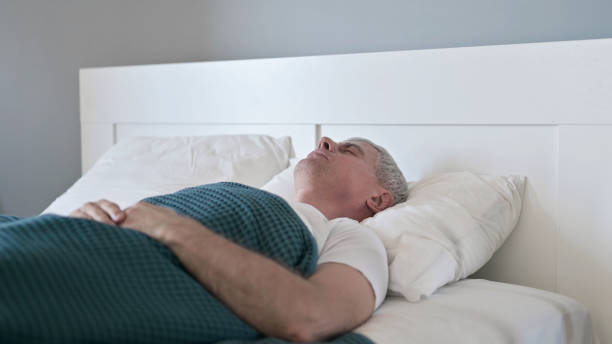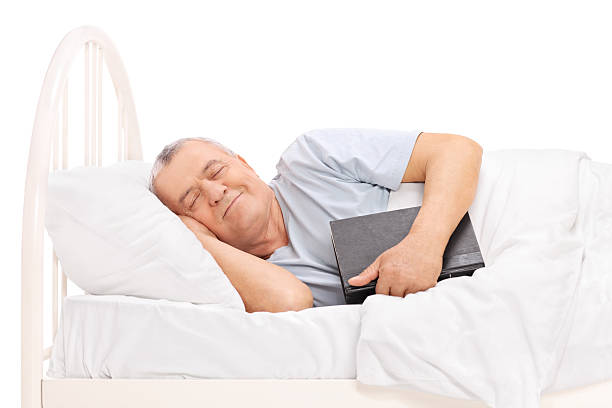Introduction

Do you find yourself weary of waking up with lingering aches and discomfort in your lower back? The struggle to attain a restful night's sleep becomes familiar for those burdened by lower back pain. Sleep quality is crucial for your overall well-being, and finding the right position can make all the difference.
This comprehensive guide will explore the best sleeping positions to alleviate lower back pain. Whether you're a back sleeper, a side sleeper, or prefer to sleep on your stomach, we've got you covered. Bid farewell to nights plagued by restlessness and usher in a new era of serene slumber, where comfort and rejuvenation embrace you with open arms. Let's dive into the world of sleep and discover the optimal positions to ease your lower back pain.
6 Best Sleeping Positions for Lower Back Pain

Here are 6 of the best sleeping positions that can help relieve lower back pain:
Sleeping on your side with a pillow between your knees :
This is one of the most recommended sleeping positions for lower back pain patients. Positioning a pillow between your knees during sleep can effectively alleviate the strain on your lower back and promote optimal spine alignment, contributing to a more comfortable and supported rest. It also helps to ensure that your hips stay in a neutral position, which helps to prevent any strain on your lower back.
Embracing the practice of sleeping with a pillow nestled between your knees offers the advantage of maintaining the spine in a well-cushioned state, shielding it from sinking into uncomfortable or unnatural positions. This approach is advantageous for individuals grappling with sciatica and hip pain, delivering much-needed relief and support. To make this sleep position even more effective, consider using a body pillow to provide extra support and cushioning.
The Fetal Position:
The fetal position is one of the most common sleeping positions, and it can be a great way to ease lower back pain. To achieve this position, curl up into a ball on your side with your legs bent towards your chest. This posture holds exceptional advantages for individuals afflicted by lower back pain, as it effectively alleviates pressure from the spine while supporting the back's natural curvature.
This sleeping position can also be great for people suffering from hip pain or sciatica, as it allows the hips to stay flexed. This helps promote an improved posture during sleep that can relieve pressure and discomfort.
However, those who experience chronic lower back pain from underlying conditions like arthritis or degenerative disc disease may find this sleeping position uncomfortable. It's important to assess your comfort level in each sleep position and switch if necessary.
The Log Position:
The log position is another popular sleeping posture for lower back pain patients. To achieve this sleeping posture, lie on your side with your legs and arms extended straight. This position allows the spine to rest naturally while taking pressure off the lower back region.
The log sleeping position also promotes improved airflow throughout the night, which can help relieve aches and pains associated with lower back pain. Some people find this sleeping posture comfortable. However, those with spinal conditions like scoliosis may find it uncomfortable.
The Soldier Position:

The soldier position is a great sleeping posture for those with lower back pain. To achieve this sleeping position, lie on your back and bring both legs together while extending them straight out in front of you. Assuming this position aids in maintaining the spine's inherent alignment and relieving the pressure exerted on the lower back area.
Additionally, this sleeping posture recommends good posture throughout the night, which can help reduce discomfort and improve overall sleep quality. Those with shoulder pain have also reported finding relief and improved comfort by sleeping in the soldier position.
Sleep on your stomach with a pillow under your abdomen:
Sleeping on your stomach is unconventional, but research has shown that it can benefit those with lower back pain. To achieve this sleep posture, lie face down and place a small pillow beneath your abdomen to provide support and cushioning. By doing so, the spine is maintained in its natural alignment, alleviating pressure exerted on the lower back region.
Additionally, this sleep posture can help alleviate any pain associated with sciatica and hip pain as it allows the hips to stay flexed throughout the night. However, those who suffer from chronic neck or shoulder pain may find this sleeping position uncomfortable.
The Half-Knees Position
The half-knee position is a great sleeping posture for those with lower back pain. To adopt this sleep position, assume a supine position and gently draw your knees upward toward your chest, ensuring they remain bent at a 90-degree angle. This position helps relieve pressure from the lower back region by removing strain from your spine.
Additionally, this sleeping posture helps keep the spine's natural curve while promoting improved airflow throughout the night. Those with hip pain or sciatica may also find relief in this position as it allows for some flexion at the hips. However, those who suffer from chronic neck or shoulder pain may find this sleeping position uncomfortable.
Sleep on your back in a reclined position:
The reclined position is a great sleeping posture for those with lower back pain. To achieve this sleep posture, lie flat on your back and prop yourself up using a few pillows. This helps take some pressure off your spine while keeping it in its natural alignment.
Additionally, this sleeping posture improves airflow throughout the night, which can help reduce discomfort and aid in better sleep. Those with sciatica or hip pain have also reported finding relief and improved comfort by sleeping in the reclined position. However, those with chronic neck or shoulder pain may find this sleeping posture uncomfortable.
By following the recommendations mentioned earlier, you can explore and find a sleep position that provides comfort for individuals with lower back pain.
Engaging in a comprehensive exploration and experimentation of various sleeping positions is vital for identifying the one that optimally caters to your requirements. Ensuring your spine remains aligned in its natural position throughout the night should be a top priority. If any questions or concerns arise, it is strongly advised to seek the expert advice and personalized support of a healthcare professional who can offer tailored guidance and assistance specific to your unique circumstances.
Other sleep hygiene tips
Here are ten valuable tips to optimize your sleep and make the most of your resting hours:
Avoid caffeine, alcohol, nicotine, and other stimulants before bedtime.
-
Establish a consistent sleep routine — going to bed and waking up simultaneously every day.
-
Keep your bedroom cool and dark; a comfortable temperature is around 65°F (18°C).
-
Exercise regularly, but not close to bedtime.
-
Maintain a balanced appetite before bedtime: Avoid going to bed excessively hungry or uncomfortably full. If hunger strikes, consider having a light snack to satisfy it.
-
Minimize electronic device usage: Steer clear of using electronic devices immediately before bed, as the blue light emitted can disrupt your natural sleep patterns. Instead, engage in activities that promote relaxation.
-
Embrace relaxation techniques to unwind and prepare your mind and body for a restful slumber. Participating in practices such as deep breathing exercises, guided imagery, or muscle relaxation aids in cultivating a sense of tranquility, facilitating an optimal state of sleep readiness.
-
To avoid extended periods of wakefulness in bed, it is recommended that if you cannot fall asleep within 20-30 minutes, you should get out of bed and partake in a relaxing activity until you feel sleepy again.
-
Dedicate your bedroom to sleep and intimacy: Reserve your bedroom exclusively for sleep and intimate moments, refraining from working or watching television in bed.
-
Seek professional assistance for stress management: If you are experiencing excessive stress, consider seeking guidance from a mental health professional who can provide valuable support and coping strategies.
How Are Sleep and Lower Back Pain Related?
Sleep and lower back pain share a close and interconnected relationship. Poor sleep posture, inadequate rest, or too much time spent in certain positions can all contribute to lower back pain. Additionally, if you already suffer from chronic or acute lower back pain, the discomfort associated with it can cause disrupted sleep habits, further exacerbating the problem.
The crucial aspect lies in maintaining proper posture and positioning while sleeping. The best sleeping positions for lower back pain will help you sustain an ergonomic body alignment and provide proper support for the spine. Keeping a neutral spinal position while you sleep can reduce potential pain triggers, allowing your body to rest.
The most important factor in finding the right sleeping position is finding one that allows your spine to remain in a natural, relaxed state. This usually means sleeping on your side with the hips and knees bent, which can help to reduce spinal compression and strain. Additionally, consider investing in special pillows and mattresses that offer extra cushioning for lower back pain patients.
When Should You See a Doctor About Lower Back Pain
Various conditions, including muscle strain, ligament sprain, herniated discs, or facet joint problems, can cause lower back pain. When you encounter lower back pain, it is essential to seek medical assistance if any of the following symptoms manifest:
-
Pain that radiates down into your legs;
-
Pain and weakness that affects your ability to stand, walk or climb stairs;
-
Pain that is getting worse despite rest and home care treatments;
-
Unexplained weight loss;
-
Fever combined with back pain.
FAQ's
Which sleeping position is best for lower back pain?
The best sleeping position for lower back pain is on your side with the hips and knees bent. TThis aids in maintaining a neutral and relaxed position for your spine throughout the night. Consider using supportive pillows or mattresses to enhance comfort and reduce potential pain triggers.
What is the fastest way to relieve low back pain at home?
The fastest way to relieve low back pain at home is by applying cold packs or taking a warm bath. Regular stretching and exercise can also help strengthen the muscles and reduce stress on the lower back. If you have any questions or concerns about your condition, seeking guidance from your healthcare professional is crucial.
How to reduce lower back pain?
Lower back pain can be alleviated by adopting good posture, regular exercise and stretching routines, maintaining a healthy weight, and prioritizing sufficient sleep. However, the pain can persist despite these proactive measures. If such circumstances arise, it is recommended to consult with your healthcare provider to assess the necessity of additional treatment options to address the underlying causes and ensure appropriate relief.
Which food reduces back pain?
Certain foods such as omega-3 fatty acids, turmeric, ginger, dark leafy greens, whole grains, and probiotic-rich foods have reduced back pain and inflammation. Eating a balanced diet rich in nutrient-dense fruits and vegetables can also help reduce inflammation.
Which food is not good for back pain?
Certain food choices have the potential to trigger inflammation and exacerbate back pain, including fried foods, processed meats, white bread and pasta, sugar-sweetened beverages, and trans fats. By consciously avoiding or restricting the consumption of these inflammatory foods, you can effectively mitigate pain and inflammation in the lower back.
Conclusion
This guide is intended to provide a better understanding of the best sleeping positions for lower back pain. Finding the right position may require trial and error, depending on your body type and condition. Additionally, it is important to consult your healthcare provider if any of the symptoms listed above are present to rule out any underlying pathology.
pain worse
chronic back pain
stomach sleeping
relieve pain
sleep positions
good night's sleep
spinal alignment
physical therapy
chronic low back pain
soft mattresses

